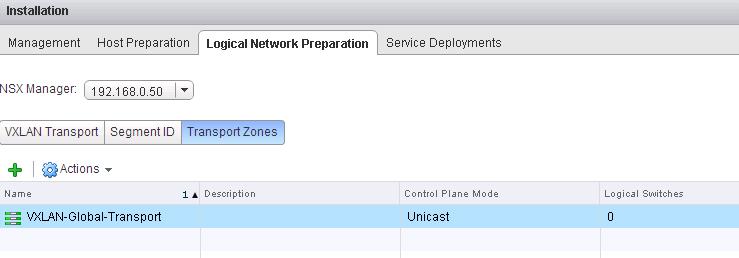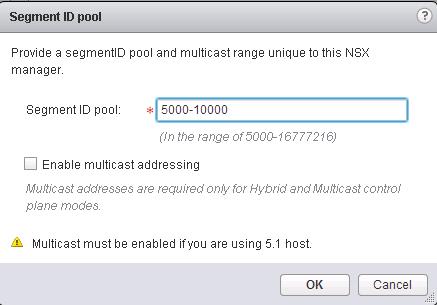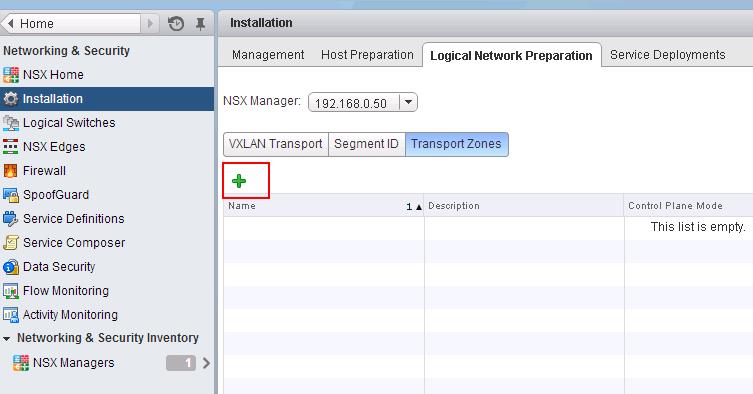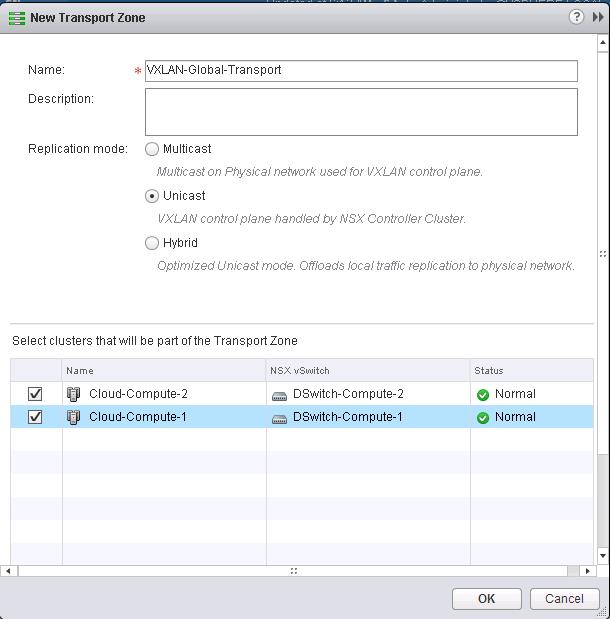In the Previous post, We have discussed about configuring VXLAN on ESXi hosts. We will discuss about creating Segment Id and transport Zones in this post. You must specify a segment ID pool for each NSX Manager to isolate your network traffic.
Segment ID:
Segment ID range carves up the large range of VXLANs available for assignment to logical segments. If you have multiple NSX domains or regions you can assign a subset of the larger pool. Segment ID pools are subsequently used by logical segments for the VXLAN Network Identifier (VNI). Create Segment ID by Login to Web CLient ->Networking & Security -> Installation -> Logical Network Preparation -> Segment ID ->Click on Edit
The segment ID range determines the maximum number of logical switches that can be created in your infrastructure. Segment ID is like VLANs for VXLAN but with VXLAN, you can have 16,777,216 of them and VLAN is only limited from 1 to 4094. Segment IDs will form the basis for how you segment traffic within the virtualized network.It is possible to use values between 1 and 16 billion, VMware has decided to start the count at 5000 to avoid any confusion between a VLAN ID (ranges from 1 to 4094) and a VXLAN Segment ID. So your VXLAN ID starts from 5000. Here I use the segment range of 5000-10000. Click on OK.
 Transport Zones:
Transport Zones:
A transport zone is created to delineate the width of the VXLAN/VTEP replication scope and control plane. This can span one or more vSphere clusters. A NSX environment can contain one or more transport zones based on the requirements.In simple terms, Global trasnport Zone is the boundary for group of clusters. Whatever logical switches you create and assign to the Global transport will become available as Distributed Port Group on your DvSwitch on every single cluster in the transport Zone. So these DVPort groups can be used to provide connectivity Virtual Machines which are attached to it. It’s a way to define which clusters of hosts will be able to see and participate in the virtual network that is being defined and configured.
To create Transport Zone -> Login to Web Client ->Networking & Security -> Installation -> Logical Network Preparation -> Transport Zones ->Click on +
Provide the Below information to create the New Transport Zone:
Name – Provide the name for your transport Zone. I named as “VXLAN-Global-Transport”
Description – Enter Description as per your wish
Replication Mode – This option enables you to choose one replication method that VXLAN will use to distribute information across the control plane. Here are the detailed explanation about each replication mode from VMware:
- Multicast: Multicast IP addresses on physical network is used for the control plane. This mode is recommended only when you are upgrading from older VXLAN deployments. Multicast mode requires IGMP for a layer 2 topology and multicast routing for L3 topology
- Unicast : The VXLAN control plane is handled by an NSX controller. All unicast traffic leverages headend replication. No multicast IP addresses or special network configuration is required.
- Hybrid : Hybrid mode is local replication that is offloaded to the physical network and remote replication through unicast. This is also called as optimized unicast mode. This requires IGMP snooping on the first-hop switch, but does not require PIM. First hop switch handles traffic replication for the subnet.
Clusters – Select the Clusters which you want to be part of this transport zone.
Click on OK to create the Transport Zones. You will be able to see the created Trasnport Zone “VXLAN-Global-Transport” under the Transport Zones. We didn’t created any logical switches , so it displays value “0” under Logical switches tab.

Other VMware NSX Related Posts:
VMware NSX Installation Part 1 – NSX Overview & Installation Prerequistes
VMware NSX Installation Part 2 – NSX Lab Design & Deploying NSX Manager
VMware NSX Installation Part 3 – Integrating NSX Manager with vCenter Server
VMware NSX Installation Part 4 – Deploying NSX Controller
VMware NSX Installation Part 5 – Checking NSX Controller Status
VMware NSX Installation Part 6 – Preparing Cluster and Hosts for NSX
VMware NSX Installation Part 7 – Verify NSX VIBs Installation from ESXi hosts
VMware NSX Installation Part 8 – Configuring VXLAN on the ESXi Hosts
VMware NSX Installation Part 9 -Create Segment ID and Transport Zones
VMware NSX Installation Part 10 – Create NSX Logical Switch
VMware NSX Installation Part 11 – Creating Distributed Logical Router
VMware NSX – Backup & Restore VMware NSX Manager Data
VMware NSX – Unable to Delete/Remove NSX Logical Switch
VMware NSX – How to Manually Install NSX VIBS on ESXi Host
VMware NSX – How to Manually Remove NSX VIBs from ESXi Host?
How to Remove NSX (Network & Security) Extension from vSphere Web Client






